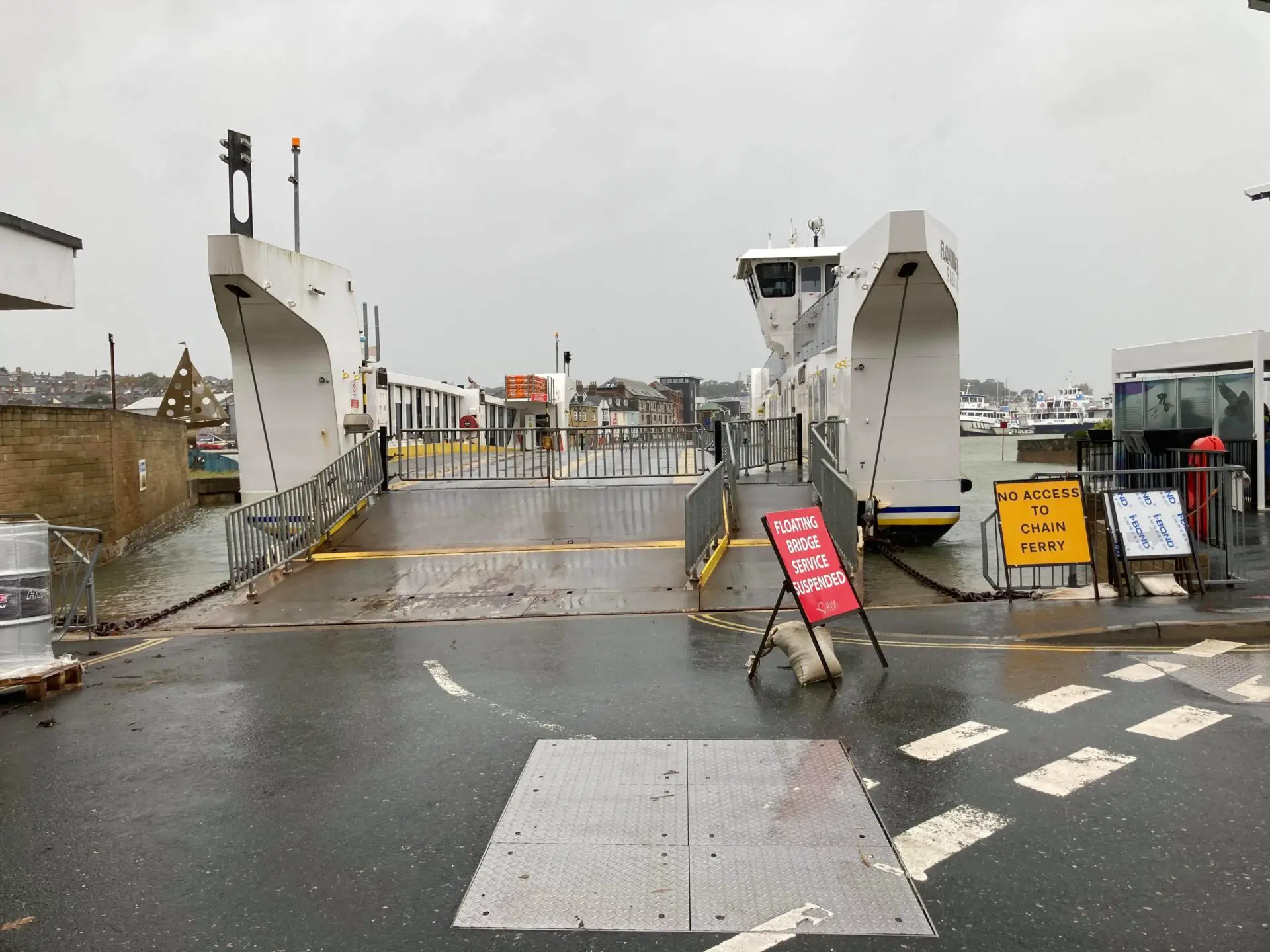Papers for next week’s Isle of Wight Council Corporate Scrutiny Committee relating to Floating Bridge 6 have now been published and are available for the public to look through (all embedded below for your convenience).
An update on the latest position is expected at next week’s meeting, but the papers prepared by officers set out the background about the procurement processes, permissions, project board, project management and touch on the issues since entering service.
What the report concludes
For those who are informed about the Floating Bridge saga, the papers don’t tell us a great deal more than we already know. They provide a bit more information about the commissioning of partners and the procurement process, but provide very little detail about the myriad of problems experienced in the years following the bridge first entering the water in May 2017 – and taken out of service the next day.
It concludes there were “no issues with the approach taken to procurement, tendering and contracting”, but because of ongoing legal meditation there are no details about negligence by any party.
Going back to the beginning
The papers explain how after “considerable negotiation” a replacement floating bridge was included in the Solent Gateways Project and after a business case was put to the Solent Local Enterprise Partnership (SLEP) in October 2014, funding was confirmed in January 2015.
The procurement process then began.
Appointing the Owner’s Representative
The papers explain how Tim Light from King Harry Ferry was appointed as Owner’s Representative to assist with planning, up to the selection of the shipbuilders and including assistance with evaluation of the ship builders, liaise between the ship builders, naval architects and council on the build, delivery, acceptance trails, commissioning and staff training and over the first year’s operation, include snagging, latent defects and look
at potential development opportunities.
As of August 2017, the Owner’s Rep had received £62,807 in return for services (£22k over the £40k forecast budget). He may have received more since then.
The route followed
Following an initial Suppliers’ Day it was decided to follow the traditional route of having a Naval Architect, to prepare outline design, general arrangement and technical specification, and a Shipbuilder, to prepare a detailed design and build (checked by naval architect).
As we know from past reports, Burness Corlett Three Quays (BCTQ) were appointed as Naval Architects and Marine Solutions Limited (MMSL) appointed the shipbuilder. These are the companies that Isle of Wight council is now engaged in ongoing legal meditation with – resulting in many questions from the press or councillors not being answered.
Appointing the Naval architects
For the Naval Architect contract six submissions were received in response to the Invitation to Tender.
One failed the financial checks, whilst another failed to meet the stage one threshold of 70% of the questions answered adequately to be able to pass to stage two.
The Commercial Services Manager, Fleet and Floating Bridge Manager and the Owner’s Representative were presented to by the top four companies and BCTQ were appointed.
Appointing the shipbuider
Following the Invitation to Tender, 23 companies expressed an interest, including two on the Isle of Wight.
The tendering process whittled this down to three bids and MMSL were selected due to their excellent facilities, capabilities, staff and suitable processes to ensure the delivery of the replacement floating bridge.
The contract award was ratified through an officer decision record signed on 27th January 2016 by the, Chief Executive in consultation with the Executive member for Regeneration, Economy and Public Transport.
Works to the slipway
A similar process followed for the procurement of a civil engineering consultant and contractor for the works required to the slipways.
The papers go on to detail permissions, as well as the makeup of the project board and project management scheme.
Recommendations following audit
As is well-reported here, there have been many ongoing failures of FB6 since it arrived on the River Medina, so in 2017 an Internal Audit Report was commissioned. Management consultants, PricewaterhouseCoopers, made the following recommendations:
The council should ensure the delivery date / testing schedule for major projects is provided by contractors and reviewed adequately prior to the commissioning phase commencing to ensure that it is detailed, completed and adequately sets out remediation responsibilities and timeframes (and potentially penalties for non completion if applicable) This review should include the independent oversight function where appropriate.
The council should ensure that key contractor personnel are in place for the duration of major projects, replaced if necessary, until such time the council has formally accepted the final deliverable.
Internal review
An internal review was also carried out by council officers and presented to the Scrutiny Committee in January 2018, which concluded there were no issues found with the replacement of the Floating Bridge until it arrived and went into service.
Again, due to the ongoing legal issues, the officer was not able to go into detail, however a number of recommendations were made.
- Ensuring project governance is in place and that responsibilities of roles are defined and structured so there is a clear escalation route of any issues to an operational project team and strategic project board;
- Ensure adequate resourcing of the project management function and not just adding this responsibility to an officer’s day job
- Improving communication and engagement plans established within project documentation to identify and inform stakeholders, to ensure that this is owned and kept under constant review by the project board
- As with any change programme consideration also needs to be given to ensuring process changes that affect the functions under taken by staff are clearly understood
- Ensure adequate time for staff training is planned with the project timeframes to ensure they are familiar and competent with new systems / functionality.
- Ensure appropriate political oversight
Papers slammed
Earlier today East Cowes town councillor, Cameron Palin, and Isle of Wight councillor for Cowes Medina, Lora Peacey-Wilcox shared their view of the papers prepared for the meeting.
Cllr Peacey-Wilcox said,
“For four years, I and others councillors around the Medina have tried to work with the current leadership and provided bulletproof engineering evidence that this floating bridge was not fit for purpose.”
Cllr Palin, East Cowes town councillor for Osborne, said,
“These Scrutiny documents cover old ground, repeating the same old story with holes in it, and do not address why for the last four years the Conservative leadership have chosen to waste millions on this bridge, against engineers’ advice.”
Watch the debate
You’ll be able to hear the latest update at the Isle of Wight Council Scrutiny meeting at 5pm, Tuesday, 9th March.
Members of the public can watch the meeting live by clicking on the link in the agenda just before 5pm.
Read the papers
You can read all the papers below (or from the IWC Website) including 43 questions put together by the Chairman of the Corporate Scrutiny Committee.
Image: © Cameron Palin





